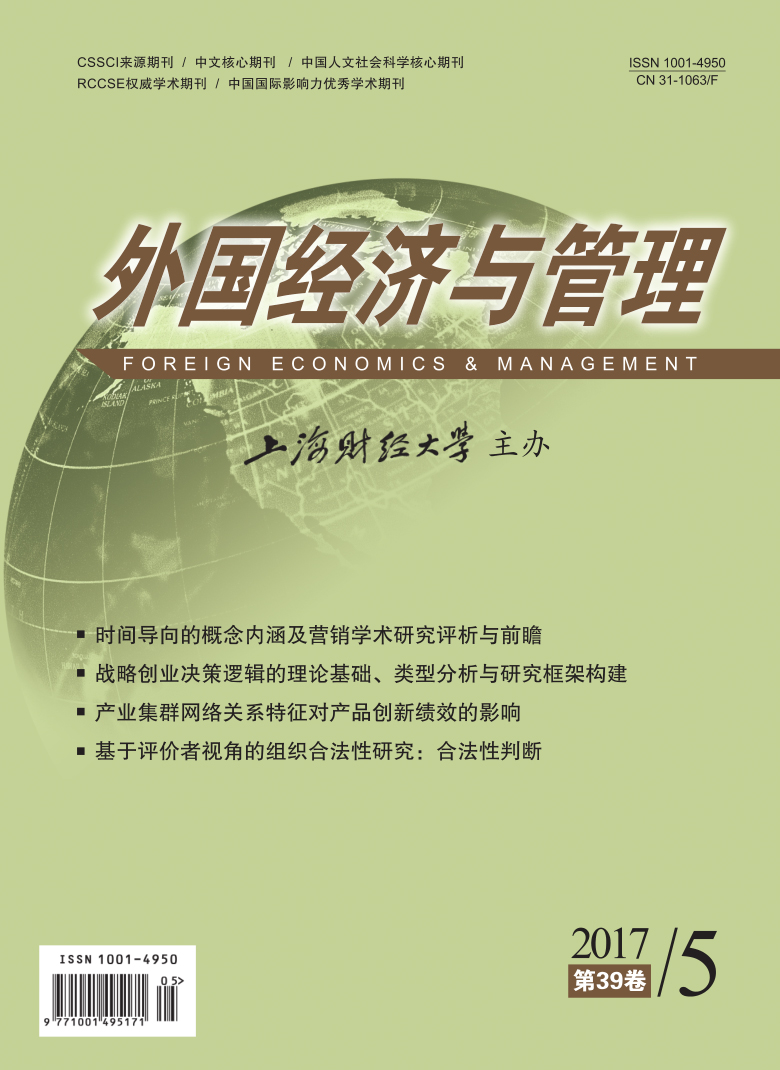银行和企业通过抱团、组建联盟来充分运用和整合市场资源,抱团能给银行、企业注入竞争与发展的强大活力,使其携手应对严峻形势,度过“寒冬”,那么在互联网金融领域,借款人通过抱团、加入群组,是否能够像银行或企业那样“取暖”。本文选取Prosper网络借贷平台上的交易数据为样本,从五个视角实证分析群组制度对P2P网络借贷行为的影响,结果显示不同借款人选择是否抱团的策略不同,借款人抱团在一定程度上可以“取暖”,但不同借款人的“取暖效果”不同。具体而言:信用等级越低的借款人更倾向于加入群组,并且加入群组对其借款成功率和借款利率的影响更为明显;加入群组可以显著地提高借款成功率,降低借款利率,提高筹资效率,但加入群组的借款人的事后还款表现欠佳,违约率偏高。本文的研究为国内P2P网络平台借贷的健康发展提供了有益借鉴。
抱团是否可以取暖?——群组制度对P2P借贷行为的影响研究
摘要
参考文献
4 裴平, 蔡越. 群组制度对P2P网贷平台借款成功率和借款利率的影响——基于Prosper.com样本数据的实证检验[J]. 经济理论与经济管理, 2016, 36: 5–15. DOI:10.3969/j.issn.1000-596X.2016.12.001
6 王会娟, 廖理. 中国P2P网络借贷平台信用认证机制研究——来自" 人人贷”的经验证据[J]. 中国工业经济, 2014, (4): 136–147.
7 谢平, 邹传伟. 互联网金融模式研究[J]. 金融研究, 2012, (12): 11–22. DOI:10.3969/j.issn.1009-4350.2012.12.006
8 Berger S C, Gleisner F. Emergence of financial intermediaries in electronic markets: The case of online P2P lending[J]. Business Research, 2009, 2(1): 39–65. DOI:10.1007/BF03343528
9 Duarte J, Siegel S, Young L. Trust and credit: The role of appearance in Peer-to-Peer lending[J]. Review of Financial Studies, 2012, 25(8): 2455–2484. DOI:10.1093/rfs/hhs071
10 Emekter R, Tu Y B, Jirasakuldech B, et al. Evaluating credit risk and loan performance in online Peer-to-Peer (P2P) lending[J]. Applied Economics, 2015, 47(1): 54–70. DOI:10.1080/00036846.2014.962222
11 Guiso L, Sapienza P, Zingales L. The role of social capital in financial development[J]. American Economic Review, 2004, 94(3): 526–556. DOI:10.1257/0002828041464498
12 Karlan D S. Social connections and group banking[J]. The Economic Journal, 2007, 117(517): 52–84. DOI:10.1111/ecoj.2007.117.issue-517
13 Larrimore L, Jiang L, Larrimore J, et al. Peer to peer lending: The relationship between language features, trustworthiness, and persuasion success[J]. Journal of Applied Communication Research, 2011, 39(1): 19–37. DOI:10.1080/00909882.2010.536844
14 Lin M F, Prabhala N R, Viswanathan S. Judging borrowers by the company they keep: Friendship networks and information asymmetry in online Peer-to-Peer lending[J]. Management Science, 2013, 59(1): 17–35. DOI:10.1287/mnsc.1120.1560
15 Liu D, Brass D, Lu Y, et al. Friendships in online Peer-to-Peer lending: Pipes, prisms, and relational herding[J]. MIS Quarterly, 2015, 39(3): 729–742.
16 Loughran T, McDonald B. Measuring readability in financial disclosures[J]. The Journal of Finance, 2014, 69(4): 1643–1671. DOI:10.1111/jofi.12162
17 Michels J. Do unverifiable disclosures matter? Evidence from peer-to-peer lending[J]. The Accounting Review, 2012, 87(4): 1385–1413. DOI:10.2308/accr-50159
18 Pope D G, Sydnor J R. What’s in a picture? Evidence of discrimination from Prosper.com[J]. Journal of Human Resources, 2011, 46(1): 53–92. DOI:10.1353/jhr.2011.0025
19 Spence M. Job market signaling[J]. The Quarterly Journal of Economics, 1973, 87(3): 355–374. DOI:10.2307/1882010
20 Sonenshein S, Herzenstein M, Dholakia U M. How accounts shape lending decisions through fostering perceived trustworthiness[J]. Organizational Behavior and Human Decision Processes, 2011, 115(1): 69–84. DOI:10.1016/j.obhdp.2010.11.009
21 Stein J C. Information production and capital allocation: Decentralized versus hierarchical firms[J]. The Journal of Finance, 2002, 57(5): 1891–1921. DOI:10.1111/0022-1082.00483
22 Tan K W P, Swee D, Lim C, et al. The impact of language variety and expertise on perceptions of online political discussions[J]. Journal of Computer-Mediated Communication, 2007, 13(1): 76–99. DOI:10.1111/j.1083-6101.2007.00387.x
引用本文
彭红枫, 杨柳明. 抱团是否可以取暖?——群组制度对P2P借贷行为的影响研究[J]. 外国经济与管理, 2017, 39(5): 85–99.
导出参考文献,格式为:





 8081
8081  7324
7324

